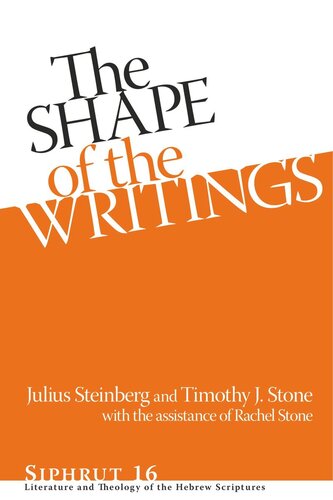

Most ebook files are in PDF format, so you can easily read them using various software such as Foxit Reader or directly on the Google Chrome browser.
Some ebook files are released by publishers in other formats such as .awz, .mobi, .epub, .fb2, etc. You may need to install specific software to read these formats on mobile/PC, such as Calibre.
Please read the tutorial at this link: https://ebookbell.com/faq
We offer FREE conversion to the popular formats you request; however, this may take some time. Therefore, right after payment, please email us, and we will try to provide the service as quickly as possible.
For some exceptional file formats or broken links (if any), please refrain from opening any disputes. Instead, email us first, and we will try to assist within a maximum of 6 hours.
EbookBell Team

4.1
70 reviewsAre the Writings a miscellaneous collection of books, as is so often asserted, or do they have a purposeful design or arrangement? Over the past 35 years, there has been a significant amount of scholarly interest in the shape of the Law, Former Prophets, Twelve Minor Prophets and the Psalms, while examinations of the shape of the Writings were almost nonexistent until very recently. The 11 essays in this volume explore this often-neglected issue from a variety of critical perspectives—reader-centered approaches, canonical, structural-canonical, and redactional—made more robust by the mix of German- and English-language scholarship on this question, including 4 articles translated from German into English. Essays range from the historical development of the collection, to analysis of the collection’s different arrangements, to the relationship of books and subcollections within the Writings, to the reception of the collection in Jewish and Christian sources. Every book in the Writings is discussed, with particular attention given to Job, Ruth, and 1 and 2 Chronicles. The volume closes with 3 critical responses from John Barton, Tamara Cohn Eskenazi, and Christopher Seitz.